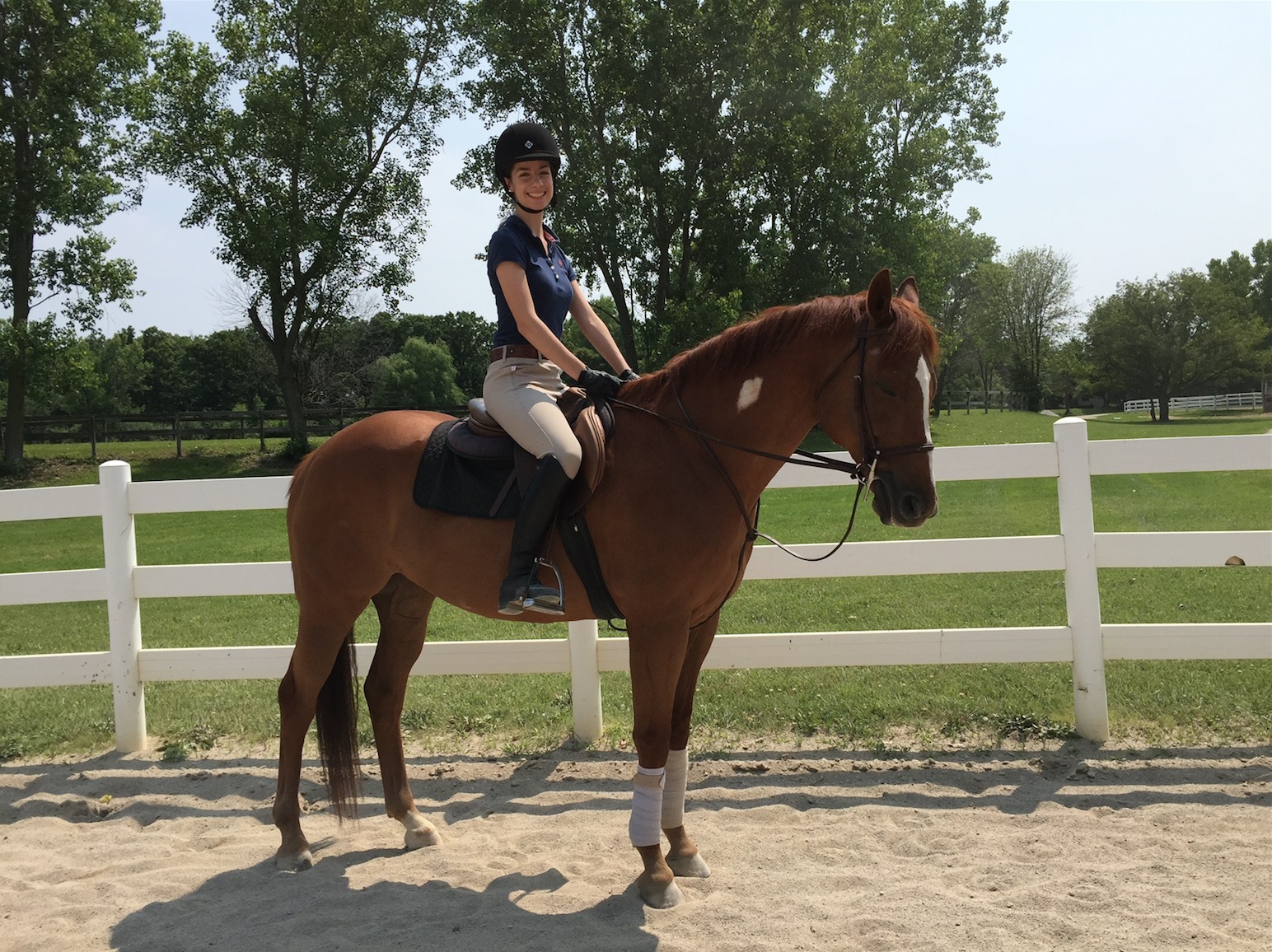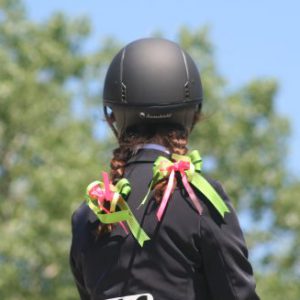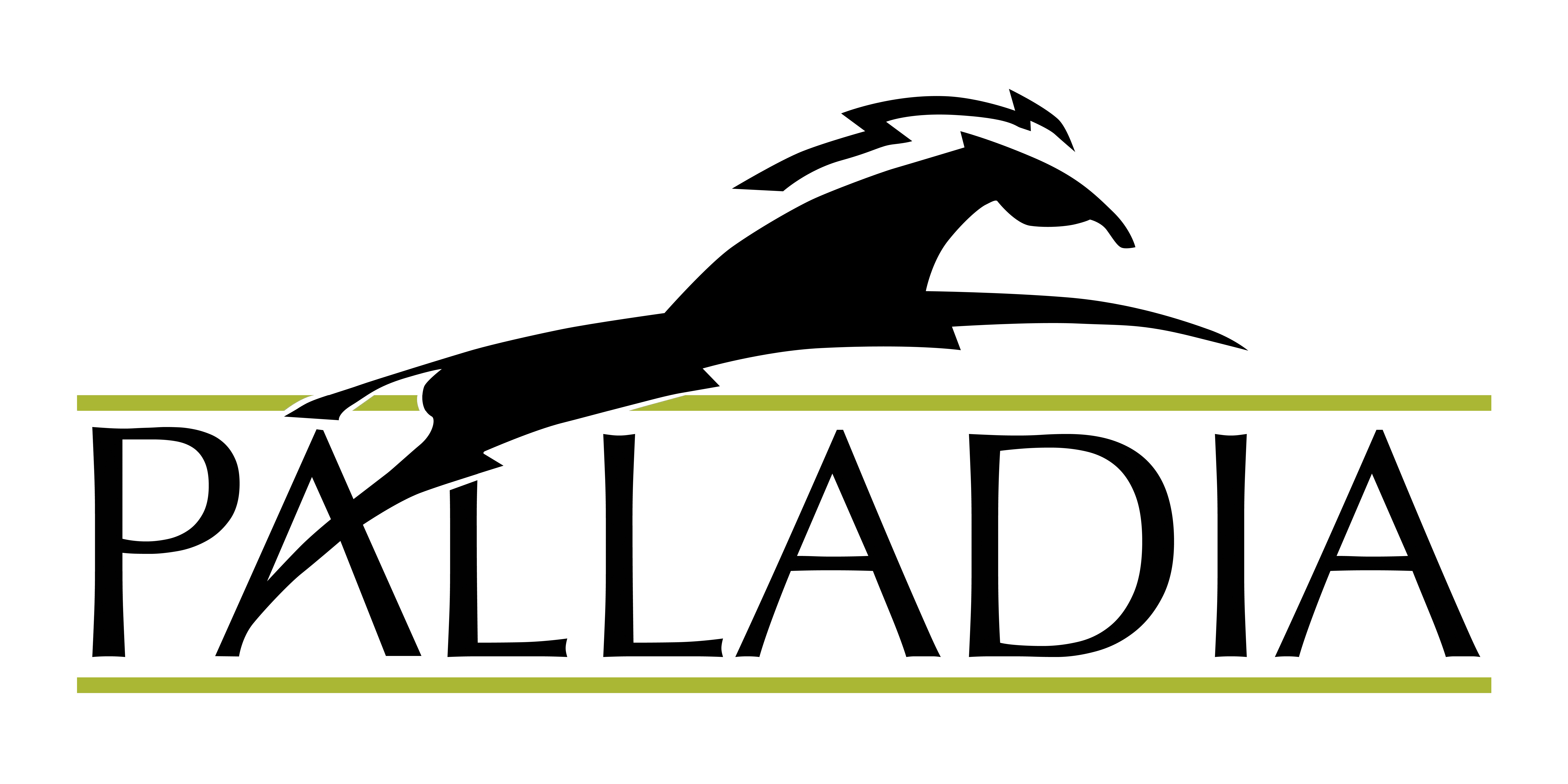Riding Lessons at Palladia Farm
We offer lessons for brand-new students through advanced riders, with an emphasis on strong foundations of horsemanship.
Whether it’s your first time on a horse or you’re looking to advance your riding skills, riding lessons at Palladia Farm are exactly what you need to become an exceptional rider. Lessons are available on our school horses as well as student-owned or leased horses, and are tailored to your level of comfort, riding experience, and goals.
At Palladia, we believe that horseback riding and competition teaches more than just skill in the arena or over fences. Learning to work with horses teaches trust, patience, and dedication. Through the relationships you’ll build with other students, your trainers, and the horses themselves, you’ll learn sportsmanship and teamwork as well.
Lessons at our barn are offered 6 days a week, and we schedule them on a first-come, first-served basis–depending on trainer and lesson horse availability. To request your lesson slot, please email scheduling@palladiafarm.com and we’ll be in touch as soon as we can.
30-Minute Riding Lessons: $85 (Boarders: $65)
Before you join us for a lesson, we ask that you complete our liability waiver and bring it with to your first lesson. Wondering what equipment you’ll need? We’ve got you covered with our riding gear list.
What to Wear for Riding Lessons
While riding boots and riding pants may be fashionable, they need to be functional if you’re actually going to ride a horse. In order to be safe while riding, you need to wear a shoe or a boot with a low, flat heel and an ASTM/SEI approved riding helmet. Actual paddock boots, gloves and half chaps are optional, but recommended and preferred by virtually all riders.
Below you’ll find a list of equipment and some recommended places of where they are available to purchase. If you have any questions about the equipment you’ll need for your lessons, please feel free to contact us.
ASTM/SEI Approved Riding Helmet
A properly fitting, ASTM/SEI approved riding helmet is mandatory, because your safety while riding is our number one priority. The better a helmet fits, the more protection you have in the event of a fall from the horse. As ASTM/SEI approved helmets can now be purchased for as little as $40, they are readily available to all riders. You can find ASTM/SEI approved helmets at Dover Saddlery (located off of IL-137 in Libertyville) and other venues online, though we recommend going to a tack shop in-person for this purchase. Having a knowledgable salesperson fit you or your child will ensure the best fit, and therefore best protection. When buying a helmet, look for an “ASTM/SEI” tag inside of the helmet, which guarantees its function as protective headgear and not just as a decorative headcovering.
We do not provide riding helmets for our students. If you’re wondering why, read why we don’t provide riding helmets.
Long Pants, Jodphurs or Breeches
Thin or baggy pants quickly bunch up between your leg and the saddle, creating painful rubs. Special riding pants are designed to avoid this discomfort. Jeans are acceptable and will provide a measure of comfort, but they are prone to chafing and the heavy inseam is often uncomfortable. Other options include thicker leggings or jeggings, provided they are slim fitting and free of any rough inseams. You can find inexpensive breeches or jodhpurs at Dover Saddlery and many other stores online.
Heeled Boots
Paddock boots are designed especially for equine activities and are the preferred equipment for new riders. They provide the best protection for the feet as well as the most comfort while riding. Their appropriate heel, reinforced sole, and protected toe insure security throughout the foot and ankle while riding, and safety while working with the horses on the ground. They can be purchased for around $40-50 from many online stores or at Dover Saddlery. Faux leather boots are usually comfortable and always economical.
Shirts and Jackets
Form fitting shirts and jackets are always best. Over-sized clothing makes it difficult for the trainer to determine whether the rider’s position is correct and effective. Riding is similar to gymnastics, where posture and balance are extremely important. In winter, heavier clothing may be necessary, but please try to wear more fitted items.
Furthermore, please ensure that you are fully covered; do not show cleavage, midriffs, or behinds while you ride. Prohibited clothing includes, but is not limited to: tank tops, off-the-shoulder tops, crop-tops, and excessively low-rise pants. We will not teach anyone who is dressed inappropriately for riding, nor will we refund any lesson fees due to violation of our dress code. Please feel free to reach out to us with any questions you may have pertaining to this code.

Hair
Long hair should be pulled back into a ponytail or low braids so that the rider can have good use of their peripheral vision, and so that the trainer can see the rider’s facial expression. Low ponytails located at the base of the neck will not affect the fit of the helmet.




